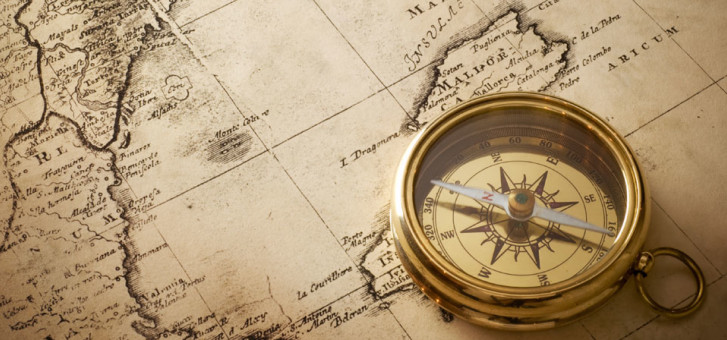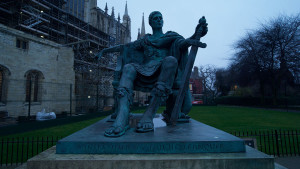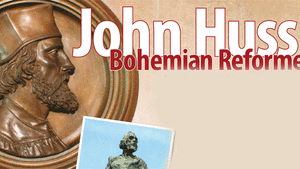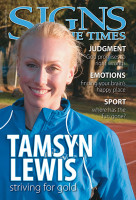Whether it's the nursery rhyme which said “I've been to London to visit the Queen,” or the Irish ballad “The Mountains of Morne” that begins, “Oh, Mary, this London is a wonderful sight,” London has been and still is a tourist's mecca. It may have something to do with its past position as the capital of an empire on which the sun never set, or that English-speaking countries around the world sense some attachment to this grand old city; yet today, London is the first stop on many a tourist's trip and is unquestionably the most visited site in Britain.
Having been on centre stage, as it were, for so many centuries, London is fascinating for any history buff. Walking along almost any street, the visitor comes face to face with the past impacting the present by way of important events, people or both.
London has wonderful museums.
The British Museum in Great Russell Street is undoubtedly one of the great museums of the world. A day spent here is not only most interesting but provides so much information about the past. Think of the Rosetta Stone, which unlocked the ancient Egyptian hieroglyphics, or the Shabaka Stone and the Tell el Armarna Tablets.
Add to this the Cyrus Cylinder, which describes the conquest of Babylon by the Persians in 539 BC. There are so many items of interest that have given us tremendous insight into past civilisations.
Besides the usual tourist places, such as the Houses of Parliament with Big Ben, or the London Eye taking you 135 metres above the ground, the Tower of London, London Bridge—still standing despite the nursery rhyme, and, of course, Buckingham Palace and the changing of the Guard, there are many places of extreme interest. Let me share a few with you.
The Monument to the Great Fire of London of 1666—62 metres high with 311 steps if you wish to climb to the top—is situated just 62 metres west of Pudding Lane, where the fire started.
The inscription at its base mentions the acrimonious tensions of the time, when the fire was blamed on sectarian animosities.
A short walk away is the great St Paul's Cathedral, designed by Sir Christopher Wren. This is history with a capital “H”! Tradition has it that a Roman temple to Diana once stood there but no proof has been found. Certainly, a Christian church of the seventh century AD was here. The next church on the site was burnt in 1087. Then the Normans built Old St Pauls—the site where John Wycliffe was tried for heresy in 1377.
Another man who influenced Christianity was William Tyndale. His New Testament was publicly burnt here in 1527. Notice the statue of John Wesley, short of stature but located outside the cathedral because he had been thrown out of the Anglican Church for most of his life. Inside the cathedral, the Whispering Gallery is amazing and the dome soars to 109 metres. Take a walk up the steps for a great view of London and the Thames.
This cathedral is the last resting place for many of Britain's famous sons and daughters, particularly those from the armed services. Lord Nelson rests in a coffin made from the mainmast of a French ship L'Orient. The Duke of Wellington, of Waterloo fame, rests here. His sarcophagus was originally designed for Cardinal Wolsey. Here also lies many painters, from Landseer and Turner, to Reynolds and Hunt.
Sir Alexander Fleming, the discoverer of penicillin, rests here. Winston Churchill's funeral was held here in 1965. But while the cathedral has memorials to Florence Nightingale and many others, one of its greatest treasures is the painting by Holman Hunt, entitled, “The Light of the World.”
One of two identical paintings, it shows Christ knocking on the door, holding a lamp in His hand. The door in the painting has no handle to open it, showing that inviting Jesus into one's life is done from the inside—He doesn't force His way in.
Outside St Paul's, we move on. Just down the street, we move past the Old Bailey law courts and the site of the infamous Newgate Prison, where so many prisoners were sentenced to life transportation to Australia.
We move along Gilspur Street and, on the left, find the house of Charles Lamb, the brilliant British essayist.
Then just past St Bartholomew's Hospital on the right is the martyrdom site of William Wallace, the Scottish nationalist who brings to mind the film Braveheart.
Opposite is a small park. The area is called Smithfield, with the Meat Market just a stone's throw away. For many years, this was the horse and cattle market.
Originally called “Smoothfield” this site is sacred, as many martyrs were burnt here for their faith. So many lost their lives here under Queen Mary that it became a field of blood or, rather, burning. Here is also where Wat Tyler, leader of the Peasant's Revolt, was executed in the time of King Richard II.
The King of England had said in Parliament, “Whosoever reads the Scriptures in the mother-tongue would forfeit land, cattle, body, life and goods from their heirs forever, and be condemned as heretics to God, enemies of the Crown, and most errant traitors to the Land.”
But within 50 years—as the Reformation progressed— the King of England had commissioned a Bible in English! A short walk from here is the Museum of London, detailing the history of the city. This museum is situated right beside the old Roman wall that surrounded the city of London.
Just outside the entrance to the museum, between it and the cafe, is a huge brass plaque in the shape of a scroll. It has engraved on it the entry from John Wesley's journal, describing his conversion on May 24, 1738, at a meeting of the Moravians. It reads: “About a quarter before nine, while he was describing the change which God works in the heart through faith in Christ, I felt my heart strangely warmed. I felt I did trust in Christ alone for Salvation; and an assurance was given me, that He had taken away my sins, even mine, and saved me from the Law of sin and death.”
Below, on ground level in Aldersgate Street, is a plaque that says this was the site where the Moravians were meeting and Wesley's conversion took place. How much the world owes to this event! Just across the roundabout is St Botolph's Church. John Wesley's father had been curate here for about a year.
At No 12 Little Britain Street, just around the corner, is the site of Charles Wesley's conversion.
This area has much to do with the Wesleys. When Samuel Wesley moved to Epworth, John and Charles would walk from Epworth to the Charterhouse School and home again each year, for holidays. It is said John Wesley would walk while reading a book for almost all of the 240 kilometres home.
The Charterhouse School the Wesley boys attended was located to the north, some 300 metres from where the Museum of London now stands.
Perhaps the most interesting sites connected with John Wesley are on and around City Road—a 15- to 20-minute walk away. Here, in Finsbury Square or Finsbury Park, Wesley would preach to the crowds in open-air meetings. A short distance away, the Wesley Chapel and the site on City Road has so many interesting things to see.
First, as you turn in at the gate, a statue of John Wesley with the words, “The Whole World is my Parish” confronts you. Ahead is the chapel in which John Wesley would have preached and where, much more recently, Margaret Thatcher was married. To the right is the house bought by John Wesley, where he lived the last years of his life.
Then, underneath the church is the Methodist Museum. A detailed history of the Methodist movement, it has a great audiovisual program.
Beside the church is the chapel dedicated to the foundry. The foundry was situated in the street behind City Road, and was bought by Wesley and turned into a church. Some of the original benches from the Foundry Chapel are here. Here is also Charles Wesley's personal organ, on which he composed so many of the hymns that have meant so much to Christians of all faiths.
With prior arrangement and permission, qualified organists are permitted to play this historic instrument, which has been the means of so much praise offered to God.
Behind the church is the grave of John Wesley, a man who probably saved Britain from a revolution like the French Revolution and brought revival to Britain. Can you imagine him riding 80,000 kilometres on horseback during his ministry and preaching to crowds many times each day?
John Wesley was so methodical, the revival that came as a result of his preaching has remained as the great Methodist Church. Organisation was his forte, and the people who responded were organised into small groups with regular Bible study.
A small room in Wesley's house is probably the key to his great success for God. It is the place of his power and, rising a while before dawn, he would make this prayer room his personal audience chamber for his daily talk with the God of heaven. There are lessons for us in this room.
Across the road from the Wesley Chapel is Bunhill Fields Cemetery. This burial ground was outside the walls of London, where the non-conformist or non-Anglican people were buried. It contains the resting place of a number of famous people. Daniel Defoe of Robinson Crusoe fame is buried here. Prominent is the tomb of John Bunyan, the tinker from Bedford of Pilgrim's Progress fame. The great hymn writer, Isaac Watts, is also buried here.
But another of God's saints is also here—Susannah Wesley, the mother of John and Charles, in fact the mother of 19 children. Susannah was the influence on John and his siblings. Susannah would take an hour a week to spend with each of her children, talking about their walk with God and commitment to Him. How the world would be changed if mothers did this universally today!
London certainly has many interesting sites. I think of George Whitfield, the great preacher whose tabernacle was just around the corner from the Wesley Chapel. Wesley and Whitfield had their differences in theology, as well as in natural abilities. Whitfield introduced Wesley to open-air preaching. However, they become so close that Whitfield, who was perhaps a far better preacher, asked Wesley to take his funeral service.
I think of other places in London: St Giles church, Cripplegate, where John Fox of the Book of Martyrs fame attended and where Oliver Cromwell was married; of St Mary Woolnoth church, pastored by John Newton of “Amazing Grace” fame; of Westminster Abbey; and of other museums, like Clock Museum and The Horniman Museum.
I especially want to see the Clink Museum, the story of a jail supervised by the Bishop of London, which gave its name to the slang term for prison— going to the “clink!” I would want to visit Rotherhite and travel down the River Thames to Leigh-on-Sea, associated with the Mayflower and the Pilgrim Fathers.
I think of Charles Spurgeon, whose sermons were printed in the newspapers each week and had thousands flocking to hear this gifted preacher speak.
London has contributed so much to the world at large, in matters of faith and inspiration, as well as empire and history. I must come back again, not just for the regular tourist places but because of the history of those who have gone before. Their lives and stories can teach us so much about life and salvation, lessons so greatly needed today.
This is why I find history so important and vitally interesting.






